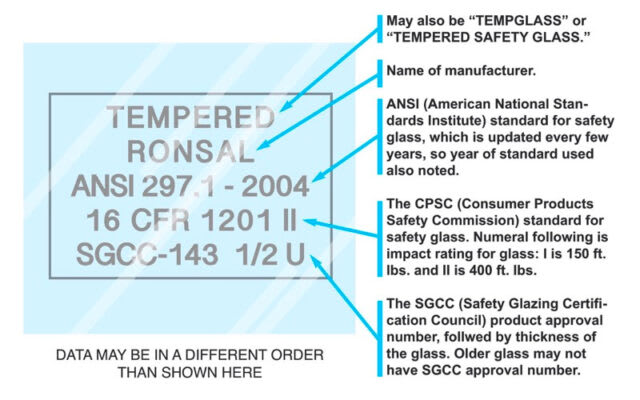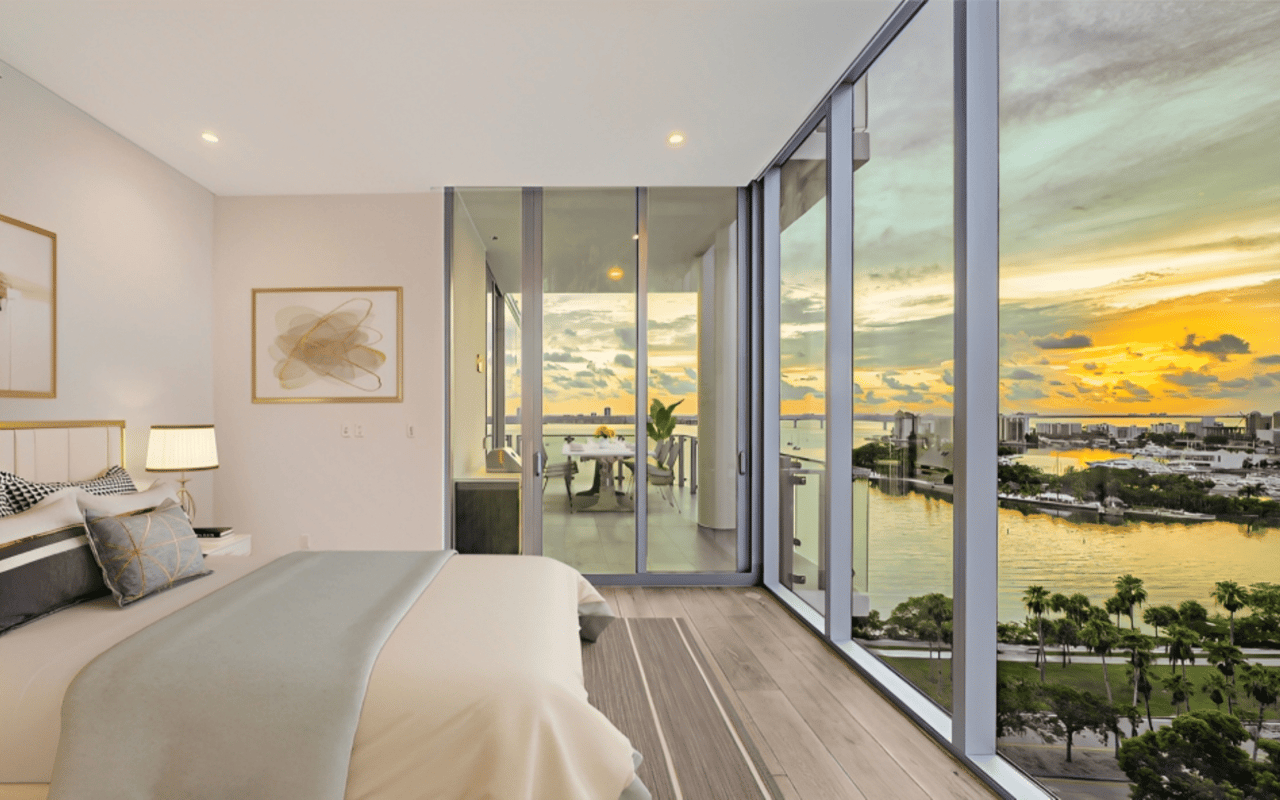If you’re looking to buy a luxury home in Florida or are examining your windows for their impact resistance, how do you find out what kind of glass is in a home’s windows?
The Florida Building Code
In 2001, in response to the devastating damage caused by Hurricane Andrew (1992), the Florida Building Code (FBC) Association established stronger requirements for wind and debris resistant housing. The association incorporated requirements for hurricane resistant windows that apply to homes within one mile of the coast where the wind speed can reach 110 m.p.h. or greater.
The code went into effect on March 1, 2002. If a home was built in Florida after March 1, 2002, and is located within one mile of the coast, it most likely has hurricane-impact windows. However, many homeowners beyond the one-mile rule choose to install hurricane-impact windows in their homes.
Types of Window Glass
Annealed Glass
Annealed glass is ordinary glass that has not been heat-strengthened or tempered. When broken, annealed glass breaks into large shards with sharp edges.
Tempered Glass
Tempered glass is heat-treated glass. The glass is heated, followed by the surface being cooled rapidly. Tempered glass is up to five times stronger than traditional glass. When broken, it does not break into large shards like annealed glass, but instead, shatters into small pebble-sized bits without dangerous edges that can cut or damage.
Laminated Glass
Laminated glass is created by bonding together two or more panes of glass with a thin layer of film or vinyl in between. This inner layer adds strength, and also prevents the window from shattering if it breaks. Instead, all the pieces stay stuck to the inner layer. It can also add UV protection and energy efficiency.
Impact-Resistant Glass
Impact-resistant glass is created by bonding together two or more panes of glass with a clear film between the panes. The thickness of this film can range, as can the UV tint or color. This film helps to hold the glass in place, making it resistant to impact.
Impact-resistant windows use impact-resistant glass, and the panes are often installed in stronger frames, allowing the windows to withstand the blunt force of strong winds, windborne debris and fire.
Hurricane-Resistant Windows
While impact windows protect your home from flying debris and wind, hurricane windows take it one step further. They are configured to withstand hurricane-force winds, pressure and corrosion, and constructed to meet stringent building codes and local requirements.
5 Ways to Identify Hurricane-Impact Windows
Here are five ways to discover if a home’s windows are built to withstand the strong winds and flying debris from hurricanes.
1. Hurricane Windows Usually Have a Permanent Mark on the Glass
Impact-resistant glass takes longer and requires more expensive resources to produce than traditional glass. Because of this, hurricane window manufacturers want to make sure you know exactly what you’re investing in. Standard windows often have a peel-able label affixed to them, while impact resistant glass often has a more permanent marking printed or etched near one of the corners of the window. The marking on hurricane windows should include:
- Supplier’s name
- Place of fabrication
- Date the hurricane window was manufactured
- Thickness of the glass
- Certifications or safety standards that the glass meets.
- This marking may be an etched, frosted mark in the corner of the window that may be hard to find
- To make this easier, remove any grime around the glass and inspect it under good lighting

2. Check the Glass for a Temporary Label
Although most sheets of glass for impact resistant windows will carry a mark in the corner, each window is custom cut. In an effort to use as much glass per sheet as possible, the impact rating label may have been cut away. In this case, the manufacturer typically attaches a removable label that states the kind of glass and the information listed above.
3. Verify Your Hurricane Windows Are Designed for Conditions in Your Area
After you pull the information from the label, we recommend verifying that the thickness and safety standards meet or exceed the hurricane rating requirements in your area.
Most impact glass is tested for air filtration, water, pressure, and structural integrity (including the strength of its framing). Because southwest Florida falls victim to all kinds of storms, it’s crucial to understand how the numbers and ratings on your window label correlate with Florida Building Code requirements, as well as the needs of your specific area.
A professional installer can help you verify the ratings on your current windows and make sure they’re up to current local standards.
4. Examine the Reflection in the Glass
If you still can’t find any markings or labels on the glass, there’s one last test to determine whether you have impact resistant windows.
Hold your hand or an object up to the glass and look at the reflection. Impact resistant glass is made of two sheets of glass, so you should see two different reflections. You can learn more about temperature and laminated glass and how to identify each here.
5. Ask an Impact Resistant Windows Expert
In the end, even if you find a label on your glass, it’s best to double-check that older windows still meet current standards. A professional installer will know exactly what the different ratings can withstand and can make custom recommendations for your home’s required (and desired) safety levels.
